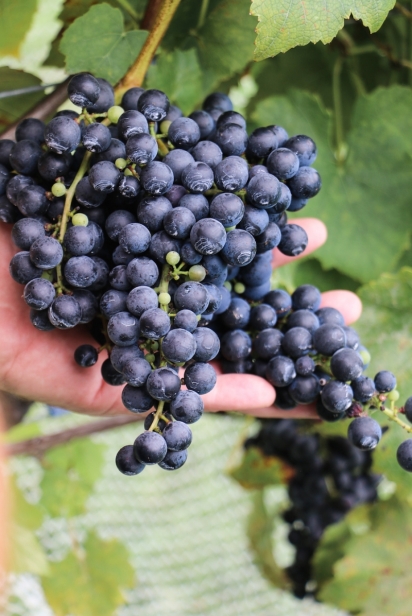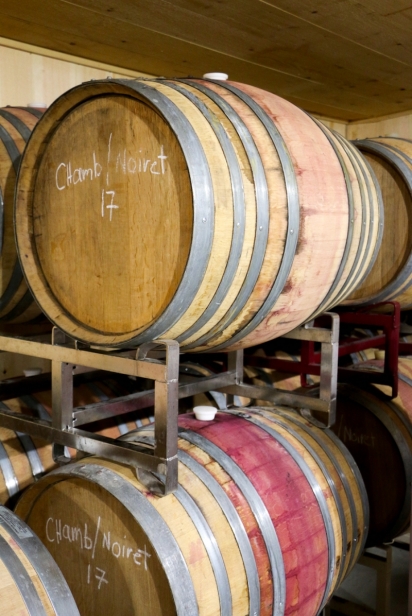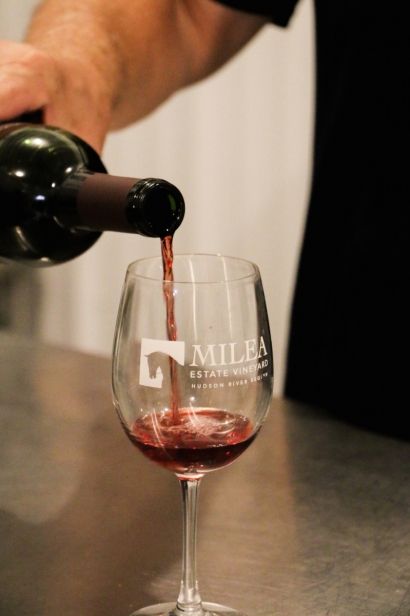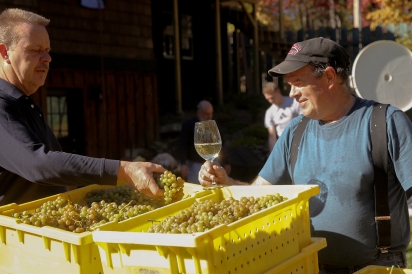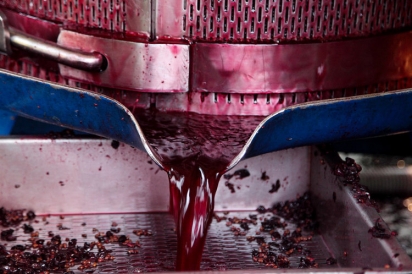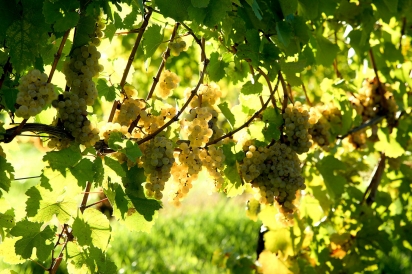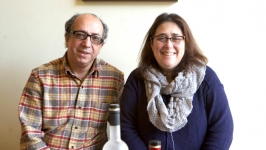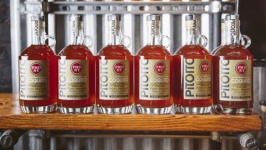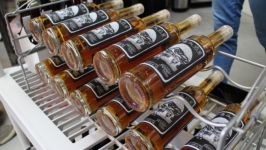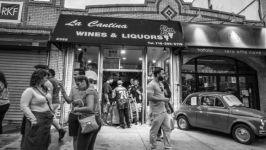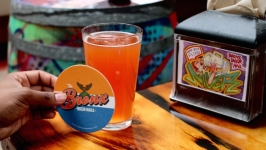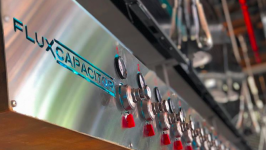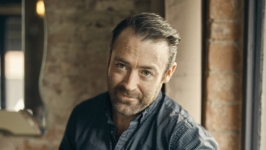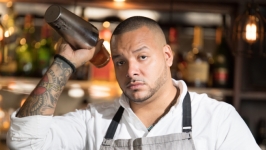A Wine Tale: From Hudson Valley to the Bronx
A new batch of Hudson Valley winemakers are working hard to change the perception of local wine. New York State–produced wines historically have had a bad rep—often considered too sweet or lacking the complex flavor profiles and depth of other regions in the United States and globally. This outdated perception is quickly being proven wrong by exceptional vineyards that are taking advantage of the incredible terroir and demand for quality local products. Milea Estate Vineyard in Staatsburg, New York, is one of them.
Barry Milea and company have been hard at work the last few years optimizing grape varieties, adjusting to climate change and employing sustainable practices to put their vineyard on the map, making the most of what New York State has to offer.
What started as a vacation home in Upstate New York, purchased by Barry Milea and his father in 1984, slowly evolved into what is now Milea Farms. The 27-acre property was the perfect place for Barry and family to experiment in farming, starting with apple trees.
“I started to dabble in apple trees, and I decided that I wanted to try to grow grapes,” he says. “We put in five rows of vines; from there, it just morphed.” The vineyard recently purchased an adjacent property, adding 10 acres of newly planted vines, and is set to open a new tasting room next spring with incredible views of the mountains. Barry didn’t do it alone, but with the help of his now-partners Ed Evans, a retired NYPD police officer from the Bronx, who is the farm manager and hard cider brewer, and Bruce Tripp, a local winemaker.
“I was one of the people that did not look favorably on New York State wine,” says Barry. “So when I got involved with people like Bruce, and I tasted the wine he made and then started to taste the wines that other winemakers were producing in this region, it really opened my eyes.”
Until the 1970s, wine wasn’t all that popular in the United States; it was mainly consumed by immigrants from countries that had produced wine for centuries. So, with lack of demand in the United States, specifically in the Northeast, there was little need to improve stateside-produced wine. But times have changed, and with the popularity of the farm-to-table movement in New York there are more educated consumers wanting to try different wine varieties. With more demand comes more opportunity for local winemakers to think outside the box.
“The terroir in New York is as good as, if not better than, anywhere else. It’s very similar to Burgundy, France,” Barry says, making it an ideal location to produce wine.
Milea Estate Vineyard currently grows a few grape varieties, including Chardonnay, Pinot Noir, Cabernet Franc, and Riesling, among others. “Our Pinot Noir is spectacular and I love the Cab Franc—but it’s like asking me which kid I like best,” says Barry. “Every vintage has its challenges—too much water, not enough water, too much heat, not enough heat. We’re constantly fighting the climate, but that’s any farmer’s challenge. The climate is the biggest challenge we face.”
One of the most exciting things about winemaking is that each vintage is influenced by the conditions of the growing season, a challenge the Milea crew has tackled gracefully, improving with each vintage since their first batch in 2015. Milea also makes a line of hard cider from the apple trees Barry planted in the early years. They currently sell three styles: Jumper dry hard cider, extra dry and one that is bourbon barrel aged.
Barry Milea and his family had a roundabout connection to the food and beverage industry before launching Milea Estate Vineyard. The Milea name is one any Bronx resident would recognize, having seen it for the past few decades on the sides and mud flaps of trucks. Originally from Brooklyn, the Milea family opened their Bronx-based truck-leasing business nearly 40 years ago.
“When we started the business in the Bronx, I lived on the second floor for the first year and a half, because we were working 18–20 hours a day. It was a small apartment,” Barry says of their first Hunts Point location. “I’ve been in the Bronx for 40 years.”
“We’re in the South Bronx—the South Bronx is a food hub; everything comes in here,” he explains. “Having a customer base that’s in the food business, we developed a clientele with a lot of restaurants and chefs throughout the industry. We specialize in refrigerated trucks, in New York. People kind of know us in some manner.” This roundabout connection is what sparked an interest in the culinary industry.
His Bronx roots also helped shape his commitment to sustainable practices. “Farm-to-table is important. I’m in the truck business–that’s my livelihood—and the South Bronx has the highest rates of asthma rate per capita in the United States. So, all the food is coming here in tractor trailers, then it’s getting trucked out of here to other places.”
“So Milea, we’re the foremost purveyor of alternative-energy vehicles in the United States—not just New York—because of where we are, because of my beliefs: We need clean air for kids. I have to sell a product, but why not push towards sustainable practices, push towards electric trucks and alternative-energy vehicles?” Barry says.
Milea’s truck and leasing business has since become one of the leading companies dealing with natural gas and electric trucks in the state. “All this is a natural progression, this is the answer to why I’m in the wine business: One, it’s a passion, but it’s also something I think we can bring here without further polluting the country.”
He continues, “What we’re trying to do is educate people. If people become adventurous and try the wine—just give it a chance—then it’s good for the whole region, not just Milea. I want this whole region to flourish. We’re 80 miles from New York City, we’re right next to the Culinary Institute of America, plus the other wineries that are around. Our products should be in New York City restaurants.” If you go to a restaurant in the city and look at the New York State wine selection, it’s nonexistent, he says.
“Well, because my farm is in the Hudson Valley and I enjoy the Hudson Valley—I want to bring what I’ve experienced there to the Bronx and New York City. That’s my goal. To bring that here to the inner city. Let the people of the Bronx experience it. Our wine is currently being sold at The Pine in the Bronx, our Papa Joe, and Chardonnay.” Barry adds, “We’re trying to bring Hudson Valley to the Bronx. It’s so close.”
Visit Milea Estate Vineyard, 40 Hollow Circle Road, Staatsburg, New York



